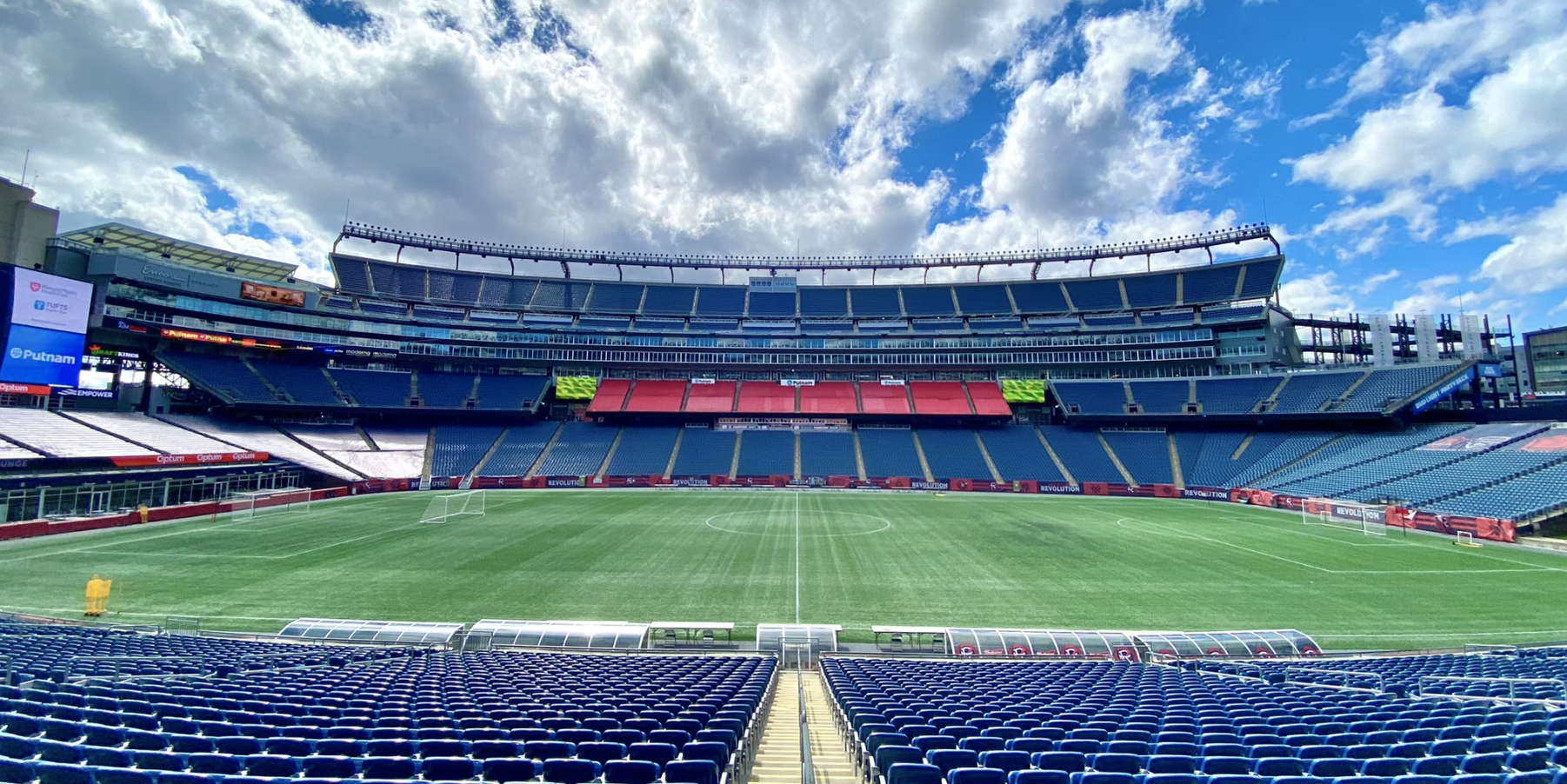On June 13, 2018, a united bid between Canada, Mexico and the United States won the right to host the World Cup in 2026. Four years later in June of 2022, the venues in which the matches would be played were announced.
Among the 16 venues selected across the three countries was Gillette Stadium in Foxborough, Mass., representing Boston. So how did Boston end up getting a coveted spot in this prestigious tournament, and what does it mean for an area with such a rich history both in and outside of the sports world?
History of Gillette Stadium
Although Boston is an official host city in the 2026 World Cup, the matches will end up being played 22 miles from the city in the suburb of Foxborough, Mass.
Foxborough is home to Gillette Stadium which is owned by Robert Kraft, the honorary chairmen of the united bid for the 2026 World Cup. Kraft, who owns both the New England Patriots of the National Football League and the New England Revolution of Major League Soccer, built the stadium in 2002. The stadium replaced Foxboro Stadium which had been the home of the Patriots since 1971 and the Revolution since their inaugural season in 1996. It had even hosted several matches for the 1994 World Cup in the United States.
One of those matches between Argentina and Greece was the last in which Diego Maradona would score at a World Cup. After the demolition of the old Foxboro Stadium, the 68,756 seat Gillette Stadium held its first event, a New England Revolution match on May 11 2002. This was followed by a grand opening in which the New England Patriots played the Pittsburgh Steelers and unveiled the banner to celebrate their victory in Super Bowl XXXVI the previous season. During football season, Gillette is known to fill to capacity in part because of the success of the Patriots in the 21 century.
Meanwhile, Revolution home matches are limited to an expandable 20,000 seat capacity. The venue has hosted many of the world’s top music acts from classic rock bands like U2 and the Rolling Stones to modern pop stars like Beyoncé and Taylor Swift. Outside the stadium is an outdoor mall area called patriot place. There you can find dinning and shopping destinations as well as live entertainment and experiences.
Reaction
The reaction from those in and outside the sport has been mostly positive with an emphasis on optimism for the future.
ESPN commentator wrote “Old American sports prejudices ebbing away,” while pondering the potential growth of the game based on his first hand experience in the city in 1994.
With World Cup 2026 venues announcement today, mind flashing back 30 years to the last such announcement (I was at the gathering in Boston.) When you think about ⚽️ then & where it is now in 🇺🇸, imagine its trajectory in 30 years. Old American sports prejudices ebbing away.
— Derek Rae (@RaeComm) June 16, 2022
Former Revolution striker recalled going to watch the World Cup as a kid in the New England area. “That’s where the dream started for me. Excited for what this will do for young boys and girls!”
The World Cup is coming back to Boston 2026! 🌎🏆 The last time the World Cup was in Boston was back in 1994 – when I saw my first ever game. That’s where the dream started for me. Excited for what this will do for young boys and girls! pic.twitter.com/2dQ1lDQ6iX
— Charlie Davies (@CharlieDavies9) June 18, 2022
Although some fans were quick to point out that calling Boston the host city might be false advertising.
Trying to imagine what it’s going to be like to have legions of 2026 World Cup fans taking the Boston > Foxborough commuter rail to Gillette and all I can think of is the movie Train To Busan. pic.twitter.com/VLQ9XW3Dj5
— Miles Howard (milesperhoward.bsky.social) (@MilesPerHoward) June 17, 2022
So Boston is on the short list of cities for #WorldCup2026. Should we update the short list to say Foxborough ?
— NERevs Rumors (@NERevsRumor) June 13, 2018
What This Means For Boston
Boston has long been known for its pride and passion their sports teams. The Boston Red Sox won the first ever World Series back in 1903. Since then there has been a high expectation for the so called four major sports. In the last 15 years alone, each team has won a least one league championship.
However, this level of enthusiasm has not trickled into the city’s local soccer club. As mentioned previously, for a normal regular season match for the New England Revolution, capacity is limited to 20,000 seats. This pales in comparison to the turnout that a team like the Patriots gets, usually filling the stadium each week. That’s not to say that Boston isn’t a soccer city. Boston is a diverse and eclectic city of people from many backgrounds.
However the lack of a soccer specific stadium in the city and the Revolution playing their home game’s in a suburb 22 miles outside the city makes it difficult for some to attend games regularly. The hope is that people will continue to turn out if they are able to see and appreciate the world’s game played by the best players in their own backyard.
What Will Boston Look Like in 2026
When Foxborough was last hosting World Cup matches in 1994, their was significant turnout from fans. All six matches played at the old Foxboro Stadium were attended by 50,000 plus fans to see teams like Argentina, Spain and Italy play. I predict that there will be an even bigger turn out for the upcoming tournament.
In 1994 soccer was still seen as an experiment in the United States. There wasn’t even a professional league at the time as Major League Soccer was two years away from playing it’s first match. Now many young people have fell in love with the game and even if they are not attending local matches, they are watching the top leagues from around the globe every weekend on television. I would predict sell out crowds for most if not all matches played at Gillette Stadium in 2026.
Those who attend New England Revolution matches at Gillette Stadium are just as passionate as any soccer crazed part of the country. What they lack in numbers they make up for in passion and appreciation for the game. There are scarfs, supporter’s groups and vocal defenders of the New England crest. I believe that the existing fanbase combined with a new group of fans from the World Cup will lead to a significant increase in the local team. And, if a stadium in or near the city with access to public transportation is possible with that crucial window of enthusiasm, Boston could become the next great soccer hub in the United States.
Spring skies 🌤 pic.twitter.com/Rs0FO1lIM9
— Gillette Stadium (@GilletteStadium) April 8, 2022






